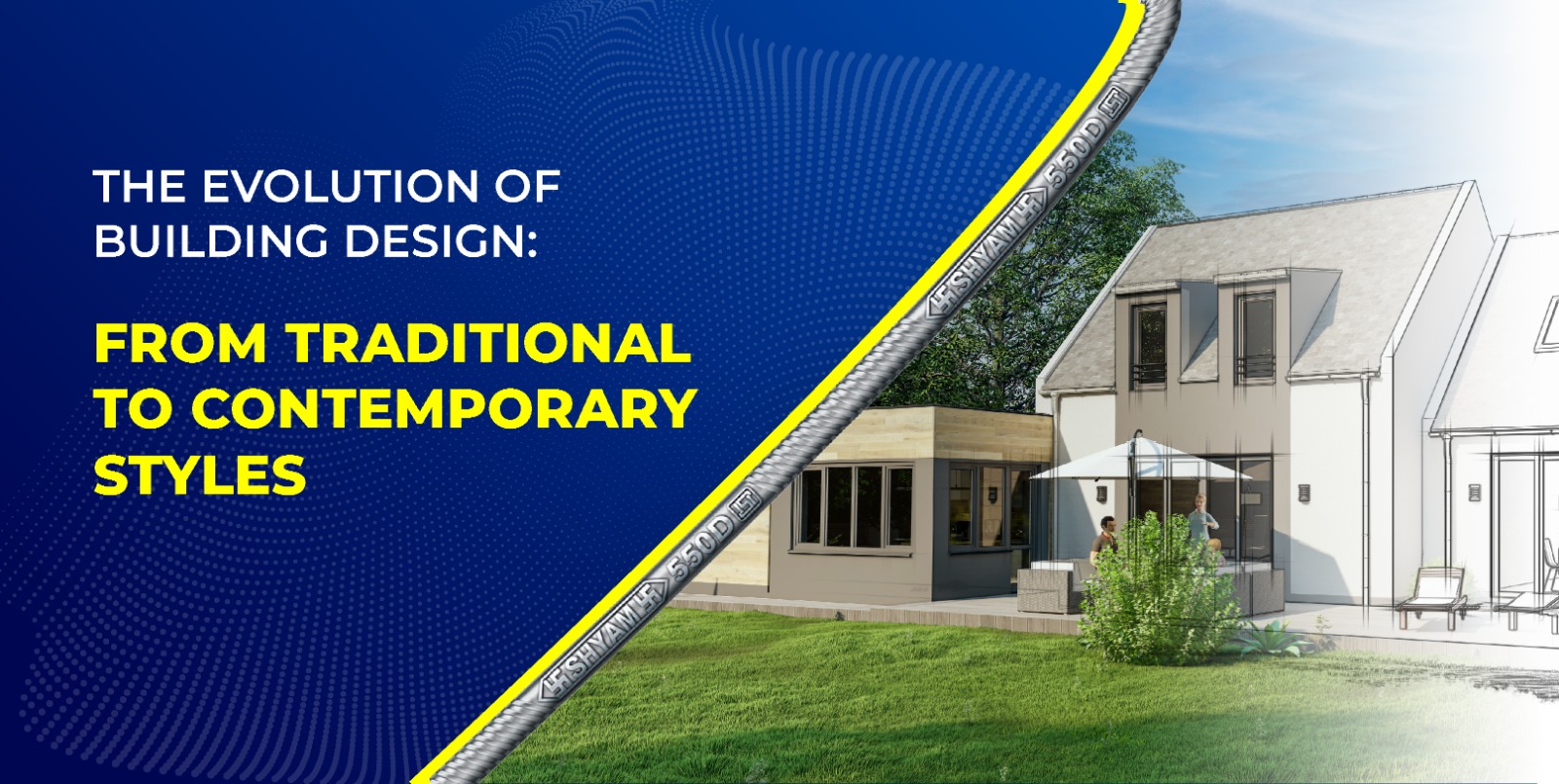The Evolution of Building Design: From Traditional to Contemporary Styles
Building design is an ever-evolving art that reflects our changing lifestyles, technologies, and cultural preferences. Over the years, architecture has transitioned from traditional styles rooted in history and culture to contemporary designs that emphasize functionality, innovation, and sustainability. This evolution has been shaped by numerous factors, including advancements in construction materials, shifts in societal norms, and a growing awareness of environmental concerns.
- The Traditional Era:
Best TMT saria manufacturer in Mizoram quotes that traditional building designs have deep roots in culture and history. These styles are often inspired by the architectural traditions of specific regions and have been passed down through generations. For example, in India, we see traditional architecture that includes the intricate designs of Mughal and Rajput palaces, or the timeless appeal of vernacular architecture in villages.
- Key Features of Traditional Styles:
1. Ornate Details: Traditional buildings are known for their ornate designs and intricate detailing, often reflecting the cultural and historical influences of the time.
2. Use of Local Materials: Traditional buildings typically utilize locally sourced materials from the best building supplies in Mizoram,which often vary from one region to another.
3. Cultural Significance: Traditional buildings often carry deep cultural and symbolic meanings, which are reflected in their design elements.
- The Transition to Modernism:
As the world moved into the modern era, building design started to shift away from the intricacies of traditional styles. Modernism favored a cleaner, more streamlined look, and focused on functionality and efficiency. Popular architects like Frank Lloyd Wright and Le Corbusier played pivotal roles in this transition.
- Key Features of Modernist Styles:
1. Simplicity: Modernist buildings embraced simplicity in design, with clean lines and minimal ornamentation.
2. Functional Design: The emphasis on functionality led to open spaces, innovative use of materials, and a focus on the practicality of living spaces.
3. Integration with Nature: Modernist designs often incorporated natural elements and sought to blur the boundaries between indoor and outdoor spaces.
- Contemporary Architecture:
Contemporary architecture builds upon the principles of modernism while also addressing present-day challenges and opportunities. Sustainability and eco-friendliness are now significant considerations in contemporary design. This style takes the clean lines and efficiency of modernist architecture and infuses it with the latest technologies and sustainable practices.
- Key Features of Contemporary Styles:
1. Sustainability: Contemporary buildings often incorporate energy-efficient designs, renewable materials, and green technologies to minimize their environmental impact.
2. Innovation: The use of advanced materials and technologies, such as steel and glass, allows for innovative and flexible design concepts.
3. Cultural Fusion: Contemporary architecture can draw inspiration from various cultures and regions, resulting in diverse and eclectic designs.
- The Role of Steel in Contemporary Design:
One of the defining materials in contemporary architecture is steel. Its strength, versatility, and durability have allowed architects to push the boundaries of design. Steel’s use in contemporary buildings not only provides structural integrity but also allows for the creation of striking, open spaces with large windows and innovative shapes.
- Conclusion:
The evolution of building design from traditional to contemporary styles reflects our changing needs, values, and aspirations. While traditional architecture celebrates the beauty of history and culture, contemporary design focuses on functionality, innovation, and sustainability. Shyam Steel, with its commitment to quality construction materials through top construction companies in Mizoram, plays a vital role in enabling architects to bring their contemporary designs to life, ushering in a new era of architectural possibilities. As technology and sustainability continue to shape our future, the architectural landscape is set to evolve further, pushing the boundaries of creativity and design.

